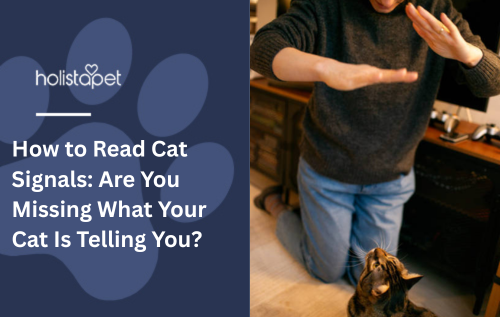Cats may not speak our language, but they communicate constantly through body language, vocalizations, and subtle behaviors. If you’ve ever wondered, “What does my cat really want?” or “Why does my cat act this way?”, learning to interpret cat signals is the key to understanding them better.
In this post, we’ll break down common cat signals, how to interpret them, and what they mean for your cat’s health, happiness, and relationship with you.
 Why Understanding Cat Signals Matters
Why Understanding Cat Signals Matters
Cats are often misunderstood as aloof or unpredictable, but in reality, they’re sending messages all the time. Recognizing these signals helps you:
-
Strengthen your bond with your cat
-
Prevent misunderstandings or unwanted behavior
-
Detect early signs of stress or illness
-
Provide a safer and more comfortable environment
Common Cat Signals and What They Mean
1. Tail Position
-
Straight up – Friendly and happy to see you
-
Curved like a question mark – Playful and curious
-
Puffed up – Frightened or threatened
-
Low or tucked – Nervous, anxious, or unwell
2. Ear Movements
-
Forward-facing ears – Relaxed and interested
-
Flat against the head – Angry, fearful, or defensive
-
Swiveling ears – Alert and listening to sounds around them
3. Eyes and Blinks
-
Slow blinking – A sign of trust and affection
-
Dilated pupils – Excitement, fear, or stimulation
-
Direct stare – Can be perceived as a challenge
4. Vocal Cues
-
Purring – Contentment (though sometimes can mean self-soothing in stress)
-
Meowing – Often directed at humans, meaning hunger, greeting, or attention-seeking
-
Hissing or growling – Warning to back off
5. Body Posture
-
Arched back with raised fur – Defensive stance
-
Rolling onto back – Trust, but not always an invitation for belly rubs
-
Rubbing against you – Marking you with their scent, showing affection
 Frequently Asked Questions
Frequently Asked Questions
Q1: Why does my cat stare at me and blink slowly?
This is often called a “cat kiss.” Slow blinking means your cat trusts you and feels comfortable around you.
Q2: My cat’s tail is twitching—what does that mean?
A twitching tail can indicate excitement, hunting mode, or mild irritation depending on the context.
Q3: Why does my cat rub against my legs?
Cats have scent glands on their face and body. When they rub against you, they’re marking you as part of their territory and showing affection.
Q4: Is purring always a sign of happiness?
Not always. While cats purr when content, they may also purr to self-soothe when stressed, anxious, or even in pain.
Q5: How can I tell if my cat is stressed?
Look for flattened ears, a tucked tail, hiding behavior, excessive grooming, or sudden aggression. These can be signals of stress or discomfort.
Final Thoughts
Learning to read cat signals transforms the way you interact with your feline companion. Instead of guessing what they need, you’ll be able to respond with understanding and empathy. Over time, you’ll build a deeper connection, making your cat feel safe, loved, and respected.
Helpful Notes for Cat Owners
-
Always consider context—one signal alone may not reveal the full picture.
-
Pay attention to changes in your cat’s usual behavior, as this can signal health issues.
-
Patience is key—each cat has its own unique way of communicating.
-
If you notice persistent signs of stress or illness, consult a veterinarian.


 CBD Oil for Dogs - Fast Acting
CBD Oil for Dogs - Fast Acting
 Chicken Flavored CBD Oil For Dogs - Easy Dose
Chicken Flavored CBD Oil For Dogs - Easy Dose
 Salmon Flavored CBD Oil For Dogs - Highly Rated
Salmon Flavored CBD Oil For Dogs - Highly Rated
 CBG Oil for Dogs and Cats - Loved by Thousands
CBG Oil for Dogs and Cats - Loved by Thousands





Leave a comment
This site is protected by hCaptcha and the hCaptcha Privacy Policy and Terms of Service apply.